France
Paris
Switch to your local agency
Retour au menu
u0022The idea of bringing to life Pastificio dei Campi was born in 2007, when the market of pasta was not yet so orientated towards innovation. Certainly beginning to develop itself is what we can define as the macro-trend of the bio product and of premium foods… but to think that pasta, the most popular and economical of Italian products, was able to become something exclusive, to sample and to appreciate as if it were a fine wine, that was a risk.u0022
Di Martino begins to tell its story, highlighting at the start that the idea of building a sustainable business around a premium pasta would not have been an easy enterprise.
u0022My family has always produced pasta, in one of the territories that have become renowned in the world thanks to pasta: Gragnano. And it is from here that I wanted to start to pursue my ambition: producing pasta of very high quality. The first step was that of asking myself and my collaborators a simple question: how can I, how can we do our work better?u0022.
u0022Farmers, millers, and pasta makers that work for my business have, like me, pasta in their DNA. They have known Gragnano and its fields for generations, as well as knowing pasta better than anyone. The recent ascent of the international markets and the necessity of producing on a large scale, have however removed the present technologies of production from the antique production methods, standardising the typology of the offer. My intention was in fact that of recovering this knowledge and making it become a niche market, finding the right balance between knowledge and innovation, between quality and modernity.u0022
u0022It is necessary that each actor of the production line, taking off from simple executer of a technical production plan, becomes a protagonist, transferring his or her entire know-how in every package of pasta. The territory, the harvesting, the storage, the preparation of the dough, the procedure, the drying, the packaging are all factors that play on a fine balance and we are all seeking to optimise each passage, although realising that this is going to bring about an inevitable increase in production costs.u0022
u0022Obviously we knew that to make these costs sustainable it would be indispensable to position ourselves and to communicate in a certain manner. We have therefore used the same approach we had used in the past: How can I enhance the design of my product? How can I communicate its quality? How can I create a truly involving brand experience?u0022
u0022To market the pasta a package had been designed in the shape of a cardboard cube, with windows in plastic that allow the immediate recognition of the pasta’s shape. The cube is very functional during transportation and conservation of the pasta, because it protects it from humidity and can be stored anywhere. At the same time, it is possible to close it once the desired amount has been dosed out, without having the package break and its contents get scattered. Furthermore, in the creation of the ideal package, we started by the needs of the chef, who stores pasta in drawers; in this context the cube with the visible product from above was the most rational and convenient solution.u0022
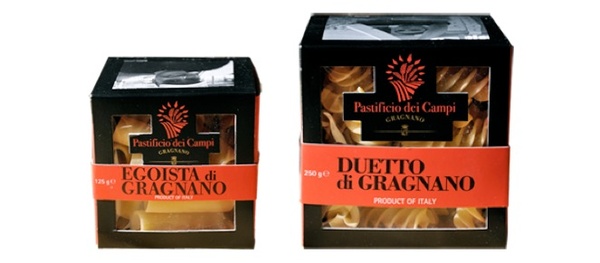
u0022The cube is also an excellent means of communication. Its faces not only are used to communicate who are the actors of the production process, but also to allow the consumers to visit the place of origin of the product itself, by means of a system of traceability. Entering the site of Pastificio dei Campi and inserting the product code, it is in fact possible to know the field in which the grain purchased was grown, the moment of its planting, the day in which it was harvested, the silo in which it was conserved for the entire period leading to the milling. And still further, the mill in which the miller ground that grain so that it would become bran of durum wheat, the day in which was delivered to Pastificio dei Campi and the day in which the bran became pasta, thanks to the work of the pasta maker, and the day in which the pasta was loaded into the packages by the packer.u0022
The entire life of a package of Pasta dei Campi is thus traced and the protagonists of this story finally have a face and a precise place. But will there be a happy ending?
u0022Pasta dei Campi today is sold in selected gastronomy shops and in the most prestigious Italian and foreign food markets. In Italy it is sold at the Rinascente of Milan, at the gastronomy shop Roscioli in Rome, at the Enoteca Di Leva of Gragnano. Outside national boundaries it is available at the Bon Marché in Paris, at Harvey Nichols in London, from Mmmmh in Brussels, from Isetan in Tokyo or from Pusateri’s in Toronto. Some chefs of the highest level have chosen it for their own restaurants: Gennaro Esposito of the Torre del Saracino, Andrea Berton of the Trussardi alla Scala, Libera Iovine of the Melograno of Ischia, Alessandro Boglione of the Castello di Grinzane and still others.u0022

Giuseppe Di Martino showed us that to have a vision and to pursue it with tenacity are the necessary premises for success. The rest was accomplished by the ability of telling an interesting story and the attention given to the needs of the consumer in planning the product Pack.
And so that it is a happy ending, with the hope of soon hearing other stories like this one, whose protagonist, why not, could be one of these students. We’ll be waiting to see, but in the meanwhile we thank Giuseppe for this extremely interesting lesson.
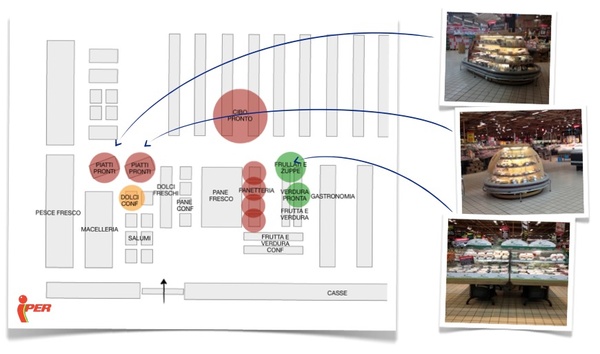
If this is true in numerical terms, with data that indicates a substantial growth of the category with 86% of the purchase managers who have bought prepared dishes in the second part of 2012, Italian retail distribution has however moved towards this offer in an almost undifferentiated manner, not meeting the needs of a target in rapid evolution and in the search of solutions that are always new, both in terms of taste and service.
Looking at the Italian consumer in fact, the drivers for the purchase of ready meals are definitely linked to specific factors such as variety and taste, but especially in eating habits and in the socio-demographic evolution of the Italian consumer, where there is the start of emergence of new needs and habits. We are thus faced with a fragmented target, which now expresses different needs compared to when the category was born.
As is known, the UK has always been the country of the Private Label, and it is in fact overseas that for quite some time it has been understood that the future of retail and commercial brands resides mainly in the kitchen. The English market for ready-to-eat dishes is absolutely the most advanced one, indeed, reflecting the eating habits of the typical English consumer. The outcome of this is a sales space that is almost exclusively dedicated to ready meals and a breadth of the assortment that is truly immense. The communication has as its centre the concepts of quality and the genuine nature of the products offered, besides supporting the consumer in the navigation at the shelf.
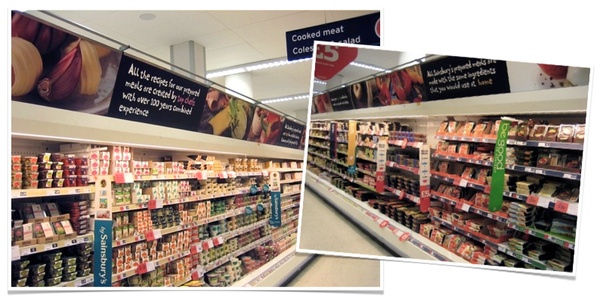
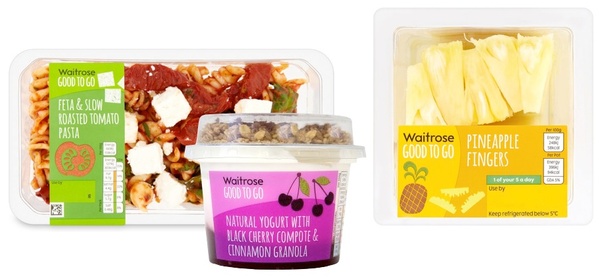
Even France emerges as one of the most mature markets in the ready meals offer. Time is in fact more and more valuable, and to be able to shop for groceries with speed, or a bite to eat on the run is an increasingly common request of the consumer, that’s how the Monoprix group launched in September 2003 the concept Dailymonop’. Inspired by the universe of the convenience store, it proposes a wider offering than traditional snack foods, and the possibility of consuming it in the store.

The German Rewe Group, one of the main world actors of the large retail distribution, has recently inaugurated its new food service concept in Cologne. Open next to a Rewe supermarket but accessible from a separate entrance, MADE by Rewe has a surface area of about 200 square metres. The assortment of the new format includes both ready-to-eat dishes and ones that are prepared on the spot and, depending on the time of day, with a menu that varies from pizza, pasta, soups, salads, sandwiches and snacks, desserts and drinks. The new concept allows the German consumers to bring home their food or to consume it in the restaurant area.
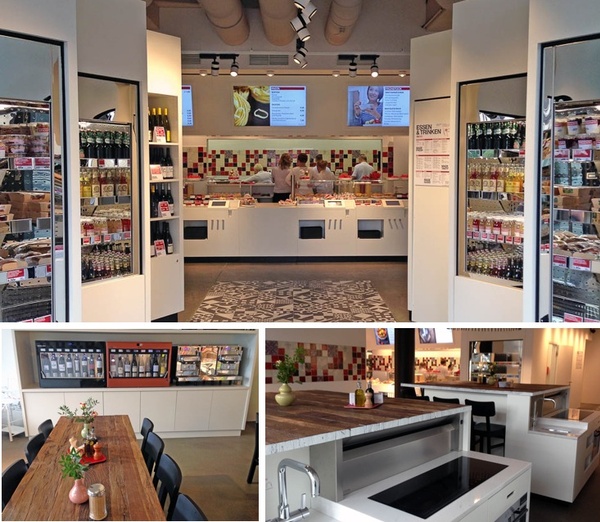
But the most interesting novelty is represented by the line of products called ‘Smart People’, composed of ready-to-cook dishes that include all of the necessary ingredients for their preparation, in addition to the relevant recipes.

Subscribe and receive CBA’s latest news directly in your inbox!
© CBA DESIGN 2021 – CB’A Srl 05940620965
Privacy Overview